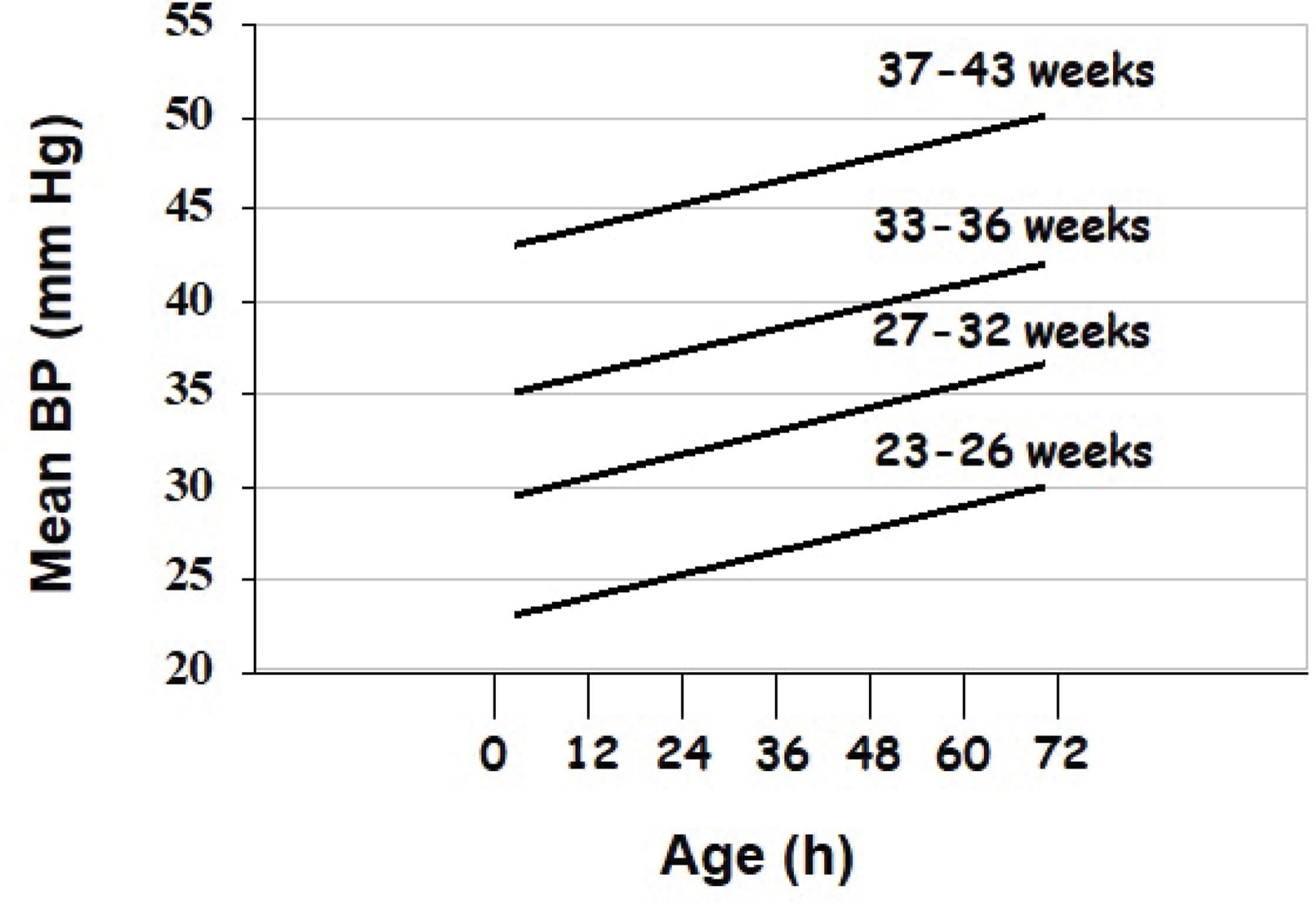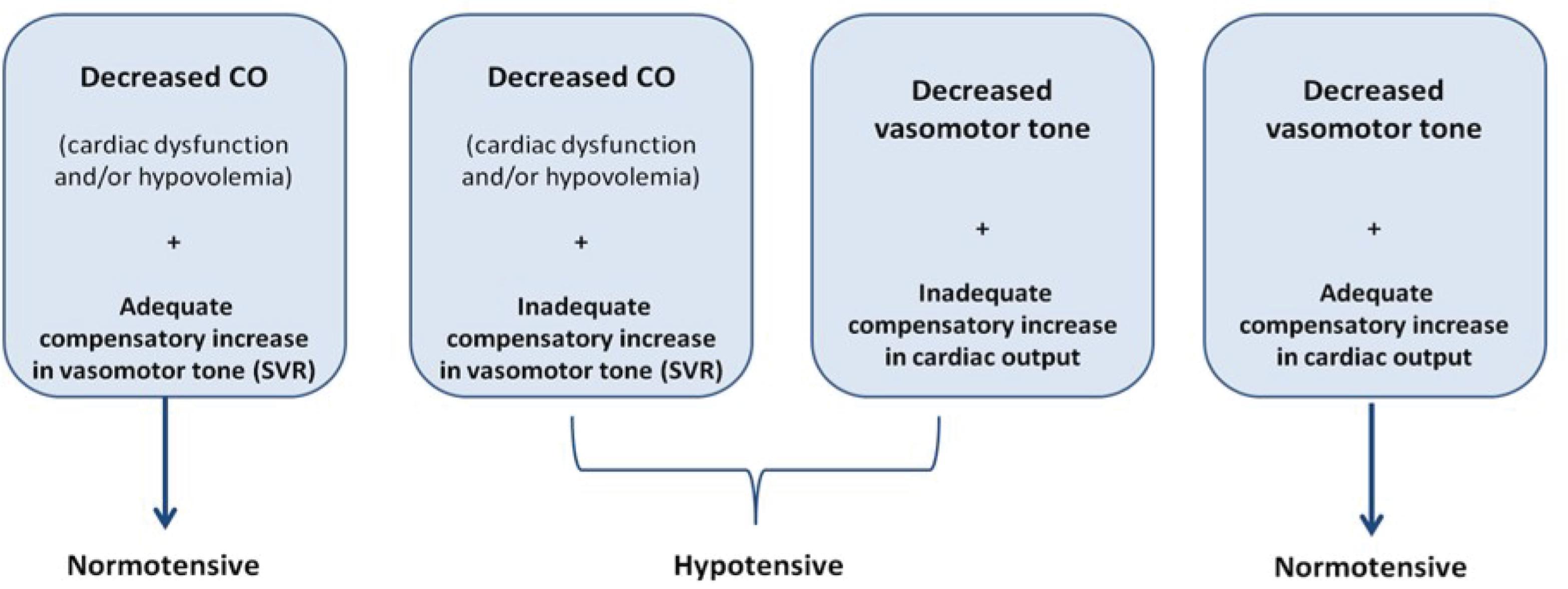Physical Address
304 North Cardinal St.
Dorchester Center, MA 02124
Shock is a clinical condition marked by poor tissue perfusion resulting in inadequate oxygen delivery and tissue hypoxia.
Neonates with shock have hypotension or poor tissue perfusion, and there are important surrogate markers such as prolonged capillary refill time, low urine output, and lactic acidosis.
Early neonatal hypotension seems to increase the risk of brain injury and intraventricular hemorrhage.
Current models of the circulatory system show the laws of fluid dynamics to be valid with a strong relationship between blood pressure, blood flow, and calculated/measured values of the cardiac output. The systemic vascular resistance can also be assessed.
The impact of the preload, cardiac contractility, and afterload on cardiac output has been discussed.
A healthy circulatory system delivers oxygen and nutrients to meet metabolic demands of the tissue and end organs. Shock is a clinical condition characterized by poor tissue perfusion resulting in inadequate oxygen delivery and tissue hypoxia. When cellular metabolic needs are unmet for a prolonged period of time, mitochondrial dysfunction, energy failure, cell death, and organ failure may ensue. Similar to pediatric and adult patients, shock in neonates can be categorized by its pathophysiological state (vasodilatory, cardiogenic, or hypovolemic shock) or severity (compensated, uncompensated, or irreversible shock). Unique to the newborn, the timing of shock (immediate postnatal or posttransitional period) may provide clues to the underlying etiology. In the immediate transitional period, newborns face the challenges of adjusting to abrupt alterations in systemic and pulmonary vascular resistance influenced by events such as timing of umbilical cord clamping and lung aeration. This is further complicated by underlying risks such as sepsis, asphyxia, or immature myocardium in preterm infants. After the transitional period, infection and necrotizing enterocolitis are among the most common causes of shock.
Neonatal shock is most readily recognized in the clinical setting by hypotension or poor tissue perfusion indicated by surrogate measures such as prolonged capillary refill time, low urine output, lactic acidosis, etc. For the sake of practicality, the gestational age of the preterm infant is commonly used as the lower limit of “acceptable” blood pressure range. This notion is derived from population studies of preterm infants of varying gestational and postnatal ages and recommendations from the Joint Working Group of the British Association of Perinatal Medicine. As demonstrated in Fig. 41.1 , mean blood pressure increases accordingly with gestational and postnatal age. The incidence of neonatal hypotension varies widely depending on the definition of hypotension and gestational age of the population studied. Because the cutoff for normal blood pressure range is elusive, studies have instead investigated the use of antihypotensive medication as an indirect measure for neonatal hypotension. Accordingly, the incidence of vasopressor-inotrope use within first 24 hours ranged from 4% to 39% in very low birth weight infants among 6 units in a regional observational study, 4.4% to 38% among 34 hospitals using a resource utilization national database, and 55% among infants born at 23 to 26 6/7 weeks’ gestational age within a research network.

In relation to outcome, numerous studies have found an association between early neonatal hypotension in preterm infants and intraventricular hemorrhage (IVH) , , or adverse neurodevelopmental outcomes at a later age. , On the other hand, several studies have not found such association between early hypotension and poor neurologic outcome. , Furthermore, the mere presence of an association without shedding light on possible causation provides little guidance for the clinician managing these patients. The relationship between hypotension and subsequent brain injury is supported by a limited amount of data. For example, hypotensive preterm infants who respond to vasopressors/inotropes with normalization of blood pressure have been reported to have a similar rate of IVH as normotensive preterm infants and a lower risk of IVH compared with nonresponders. As part of a national prospective population-based cohort study of extremely preterm infants, 119 infants with untreated hypotension (mean blood pressure [BP] < gestational age [GA]) were matched with 119 infants who were treatment for isolated hypotension in the first 3 days of life. The treated group had a higher rate of survival without severe morbidity and a lower rate of severe IVH and cerebral injury. There was even a stronger association between treatment and a better outcome when hypotension was defined as mean blood pressure < GA minus 5. This dose-effect relationship strengthens the possibility for causality between hypotension and brain injury in extremely preterm infants. However, even if hypotension contributes to development of poor outcomes, given the ambiguity regarding the blood pressure threshold below which organ perfusion is compromised and, more importantly, organ damage occurs, it is clear that monitoring blood pressure alone is not enough in assessing adequacy of circulatory function. Because other clinical (capillary refill time, core-peripheral temperature difference, heart rate, urine output) and laboratory (lactate, base deficit) markers of circulatory compromise have low sensitivity/specificity or lag in terms of manifestation, further monitoring technology is needed. In this chapter, we will review hemodynamics and discuss several tools that can enhance clinicians’ ability to assess adequacy of cardiovascular function and guide management.
The circulatory system as a whole can be better understood by applying Ohm’s law of electricity to fluid dynamics, which grossly explains the relationship between blood pressure and blood flow:
Further applying the principle to cardiovascular physiology:
From the above equation, it can be appreciated that blood pressure is a dependent hemodynamic variable resulting from the product of cardiac output (CO) and systemic vascular resistance (SVR). Unlike blood pressure, the two other major parameters (CO and SVR) are not routinely measured in the neonatal intensive care setting. Therefore circulatory compromise or shock may exist (and be subclinical or compensated) despite having a “normal” blood pressure. For example, in the setting of myocardial dysfunction, CO and overall systemic blood flow are reduced. Neuronal and hormonal signals mediate vasoconstriction at the level of the arteriole and increase SVR in response to decreased perfusion pressure and blood flow. The compromised hemodynamic state can remain clinically undetectable by way of this compensatory mechanism that acts to maintain blood pressure. The concept is illustrated in Fig. 41.2 , which further explains why the use of abnormal blood pressure as a sole indicator for hemodynamic instability may not provide the full hemodynamic picture. Furthermore, the “normal” cutoff range may vary between individuals and even in the same individual in different pathologic states.

Cardiac output is an important hemodynamic parameter that is not routinely measured or monitored in the neonatal intensive care setting. Cardiac output (measured in milliliters per minute) is the product of the volume of blood that the left ventricle ejects (stroke volume [SV]) multiplied heart rate, CO = SV × HR. The following sections briefly explain determinants of SV (preload, contractility, afterload) because this may aid the clinician in arriving at the etiology of the low cardiac output and administering appropriate treatment.
Echocardiography is the quintessential and most convenient bedside tool for the evaluation of cardiac dysfunction. The following section will include various echocardiographic indices that may guide the bedside clinician in developing treatment strategies to improve cardiac output and systemic blood flow.
Become a Clinical Tree membership for Full access and enjoy Unlimited articles
If you are a member. Log in here